The Driver Vehicle Inspection Report (DVIR), is a vital aspect of any fleet operation. Our electronic DVIR allows drivers to complete and submit daily vehicle inspections via a mobile application or in-vehicle tablet. The solution integrates into the TN360 ELD and Maintenance platforms, so you can be confident that driver on-duty time is being recorded correctly and maintenance actions are being completed.
Watch Video Build Your SolutionThe TN360 DVIR application has been designed to make pre and post-trip inspections easier for drivers. From the mobile app or dedicated tablet drivers can:
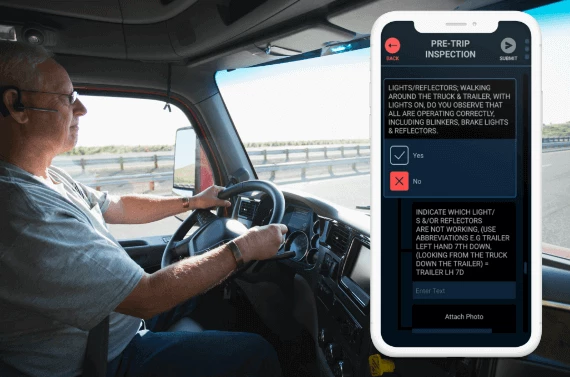
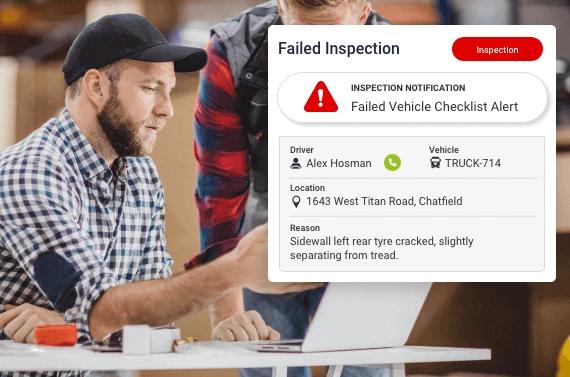
Automated workflows push failure notifications straight into the TN360 maintenance platform, so you can quickly resolve maintenance issues. After maintenance has been completed the next driver to use the vehicle is prompted to confirm the issue has been resolved.
With a seamless integration into the TN360 ELD platform, you can be confident that driver on-duty time is being recorded correctly and your drivers are compliant with hours or service regulations.
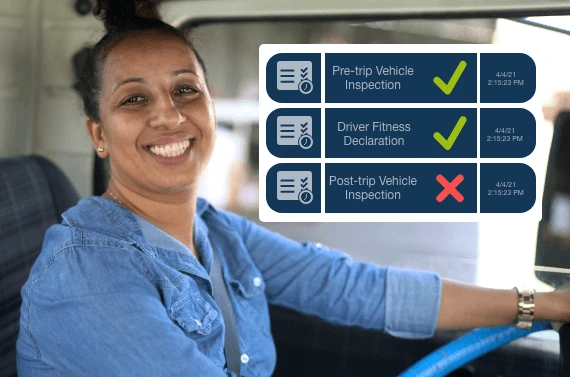
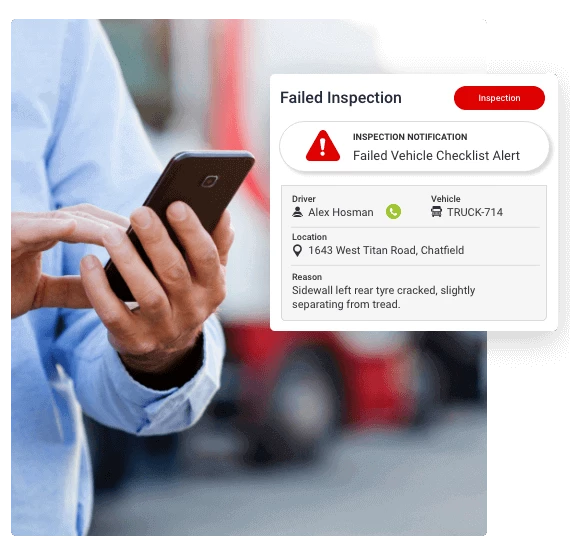
There are a few essential components to the Driver Vehicle Inspection Report that every driver should inspect every day. This list includes, but is not limited to:
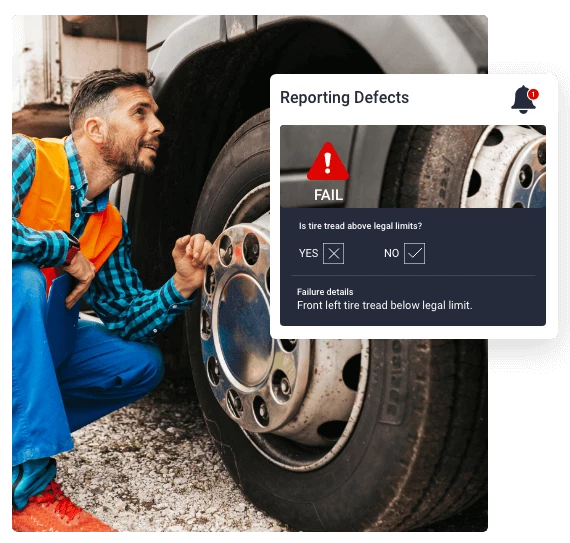
Once the inspection is complete, drivers can electronically record any defects or other deficiencies directly from their mobile phones. Items to note should include any malfunctions and issues that could lead to a breakdown or malfunction in the future.
Drivers can include photographic evidence to make it easier for motor carriers to identify the severity of the issue and take corrective action. Drivers can then sign off and submit inspections wirelessly.

Under federal law, the FMCSA requires drivers to complete a Driver Vehicle Inspection Report before and after each day’s work. Stay compliant with DVIR rules and regulations as defined under sections 393.11 & 393.13 of the CFR.
With Teletrac Navman, motor carriers can create digital processes that help drivers to complete all elements required in DVIR processes, and with a direct integration with the TN360 ELD platform you can be confident that on-duty time is being correctly recorded.
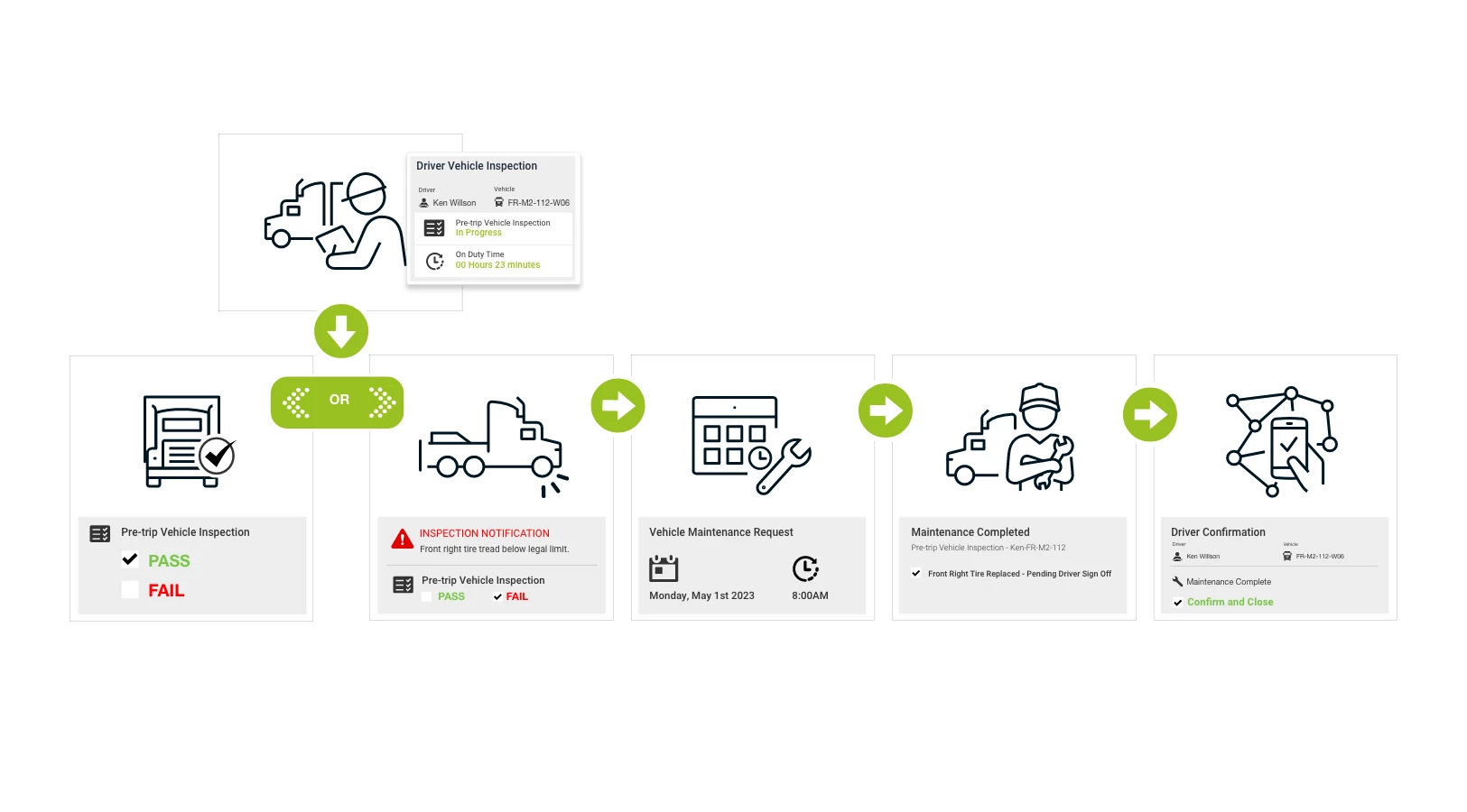
DVIR compliance creates a lot of questions. We’ve compiled a list of the most frequently asked DVIR questions to help drivers and motor carriers get the answers they need.
The Driver Vehicle Inspection Report should include pre- and post-trip inspections of the following vehicle components:
The report is also required to contain a date and vehicle identification information, such as license plate number, fleet ID number, or VIN. Drivers must sign reports stating the information provided is accurate to the best of their knowledge.
DVIR stands for Driver Vehicle Inspection Report. It is a formal inspection mandated by the Federal Motor Carrier Safety Administration (FMCSA) that drivers must carry out at the beginning and end of each shift stating the vehicle is safe to operate. The report can be completed either via paper or digitally and must be retained for at least three months from the date the report is submitted.
Safety is the most important reason for conducting Driver Vehicle Inspection reports, but failure to do so can result in severe fines and penalties.
The U.S. Department of Transportation governs DVIRs under the Federal Motor Carrier Safety Act. Penalties can be imposed upon motor carriers for missing or incomplete Driver Vehicle Inspection Reports of $1,270 a day. Knowingly falsifying, destroying, or altering a DVIR can result in a maximum fine of $12,695. And finally, a civil penalty of up to $15,419 can be imposed for each instance of non-recordkeeping.
In addition to fees, the DOT can remove any vehicle from service that’s found to be out of compliance with DVIR rules, which can result in loss of revenue and a lower CSA score.